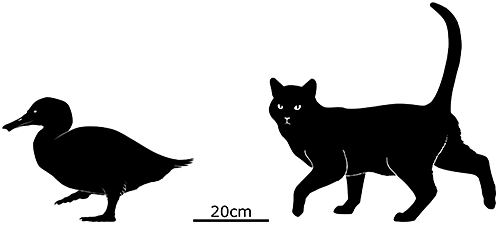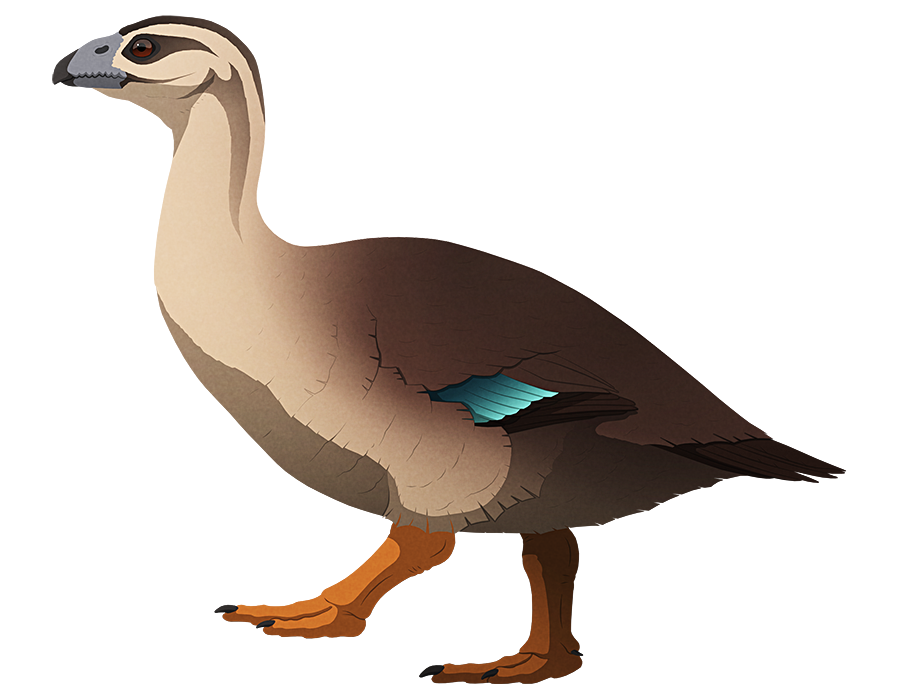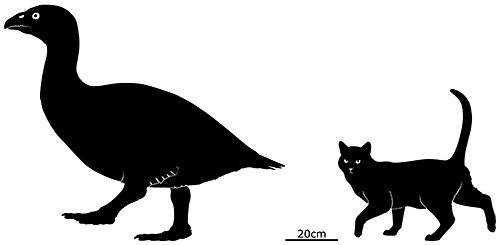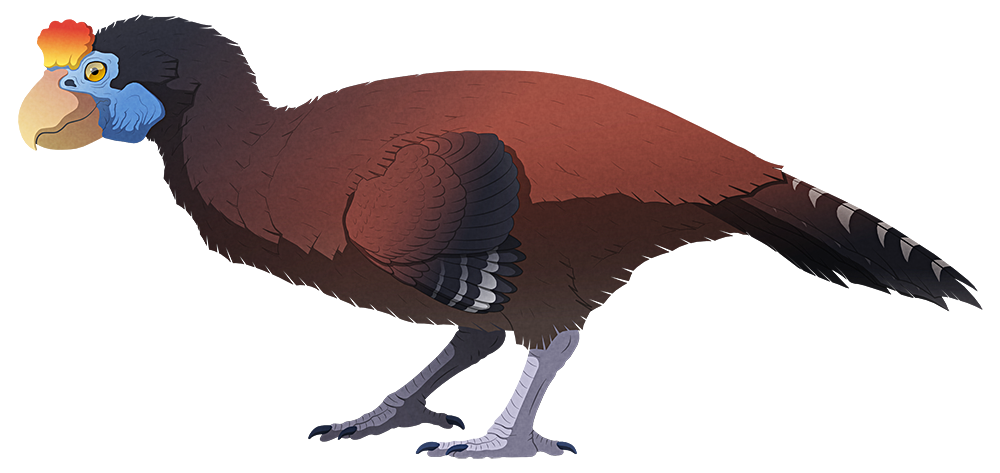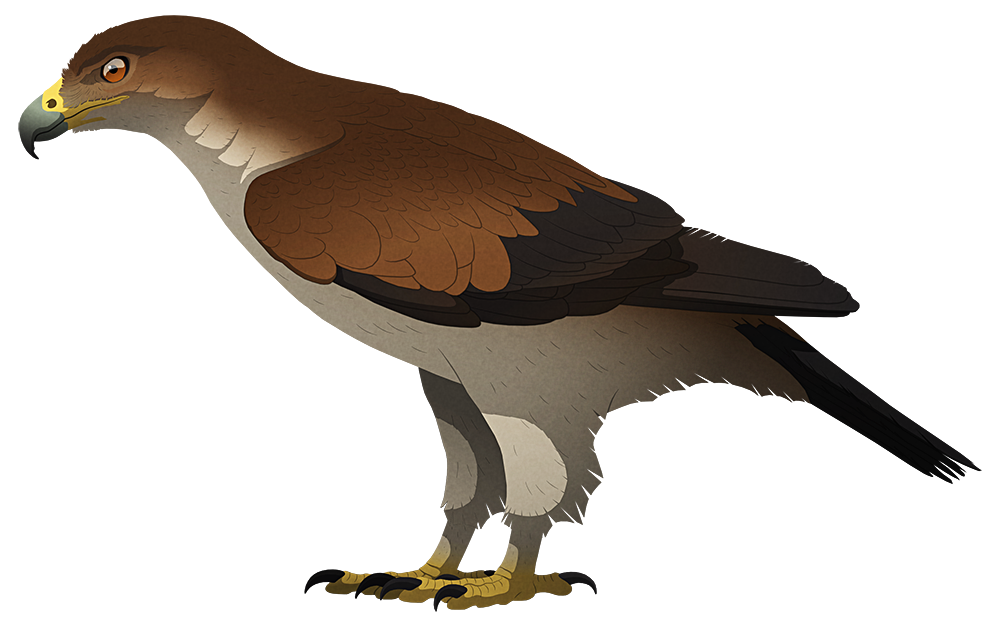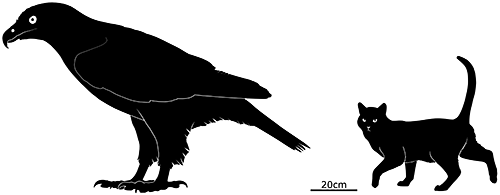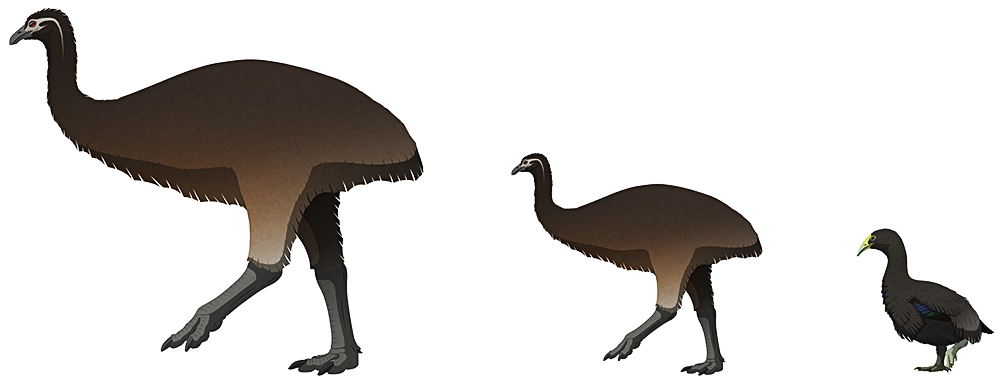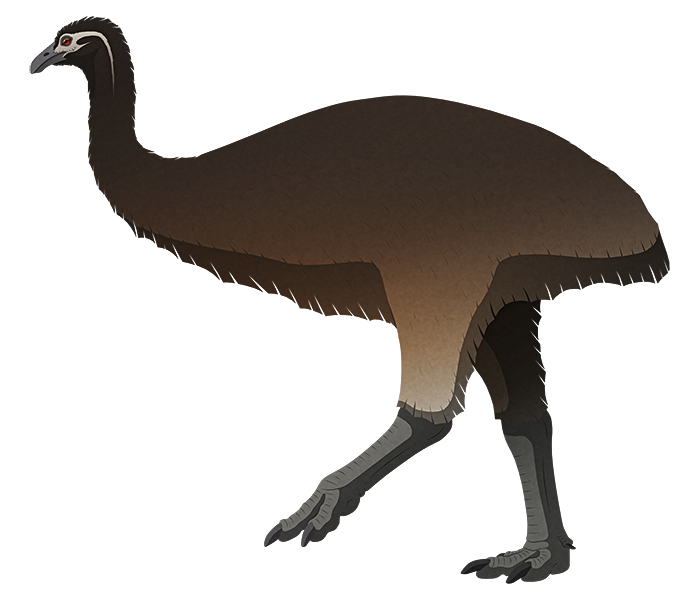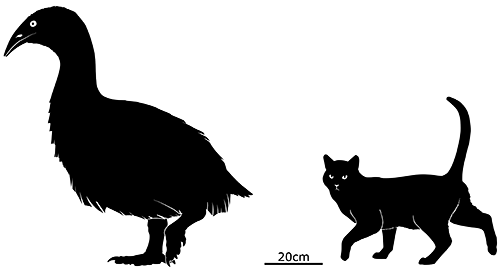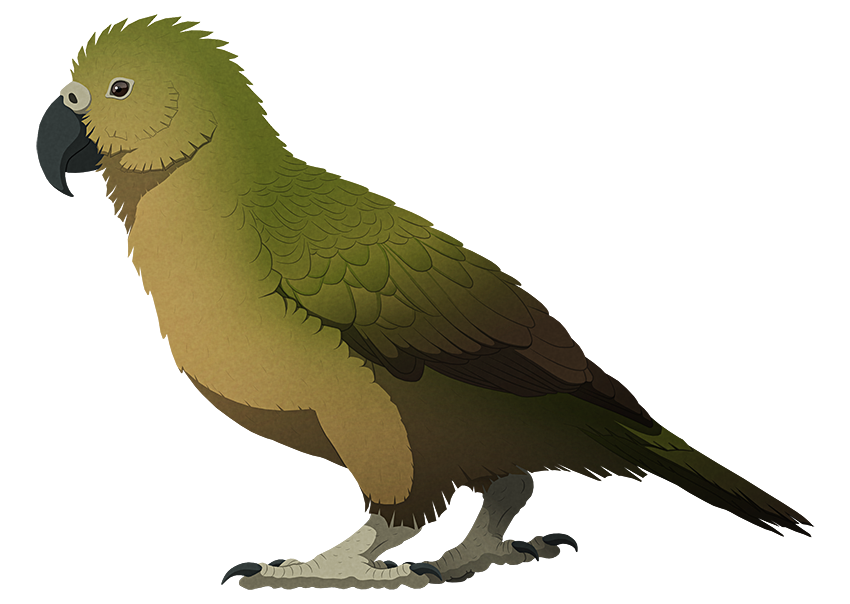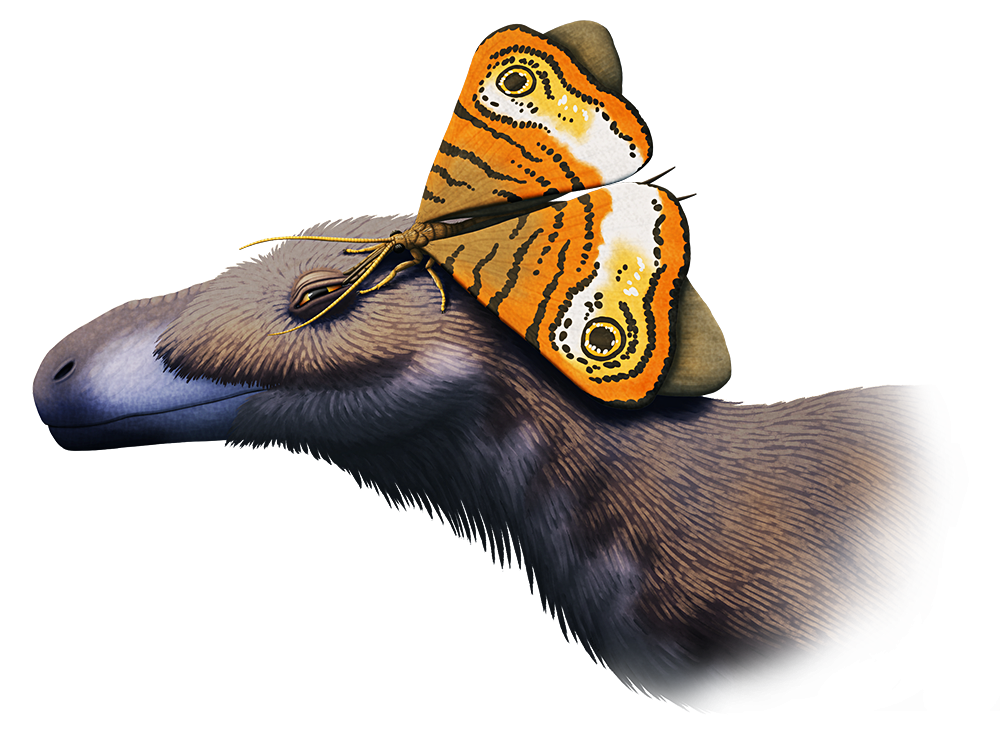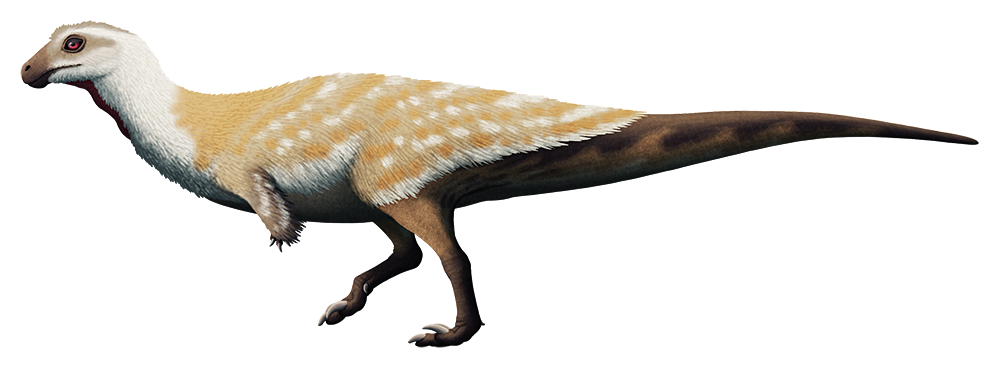The complete lack of land mammals on the Hawaiian islands left the terrestrial predator niches available to birds — and it was owls who ended up taking advantage of that role in the ecosystem.
The Grallistrix owls were found on Kauaʻi, Oʻahu, Molokaʻi, and Maui, with each island having its own endemic species. They were a type of true owl, probably descended from a species of Strix, and developed especially long legs that led to their nickname of “stilt-owls”.
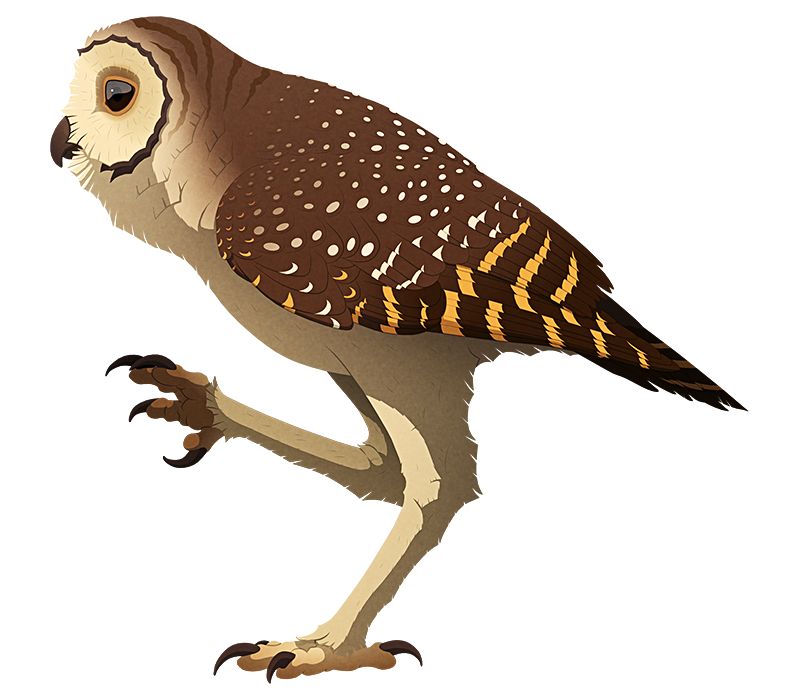
The Molokaʻi stilt-owl (Grallistrix geleches) was the largest of the four known species, about 60cm tall (2′). Although it had proportionally short wings it was still capable of flying, and probably specialized in stalking and ambushing smaller birds like Hawaiian honeycreepers in the dense forests.
(These owls were also the inspiration for the pokémon Decidueye!)
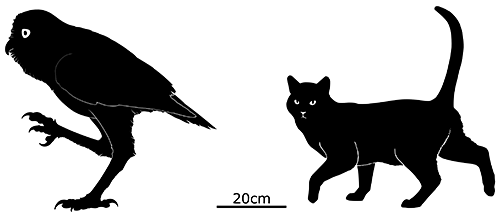
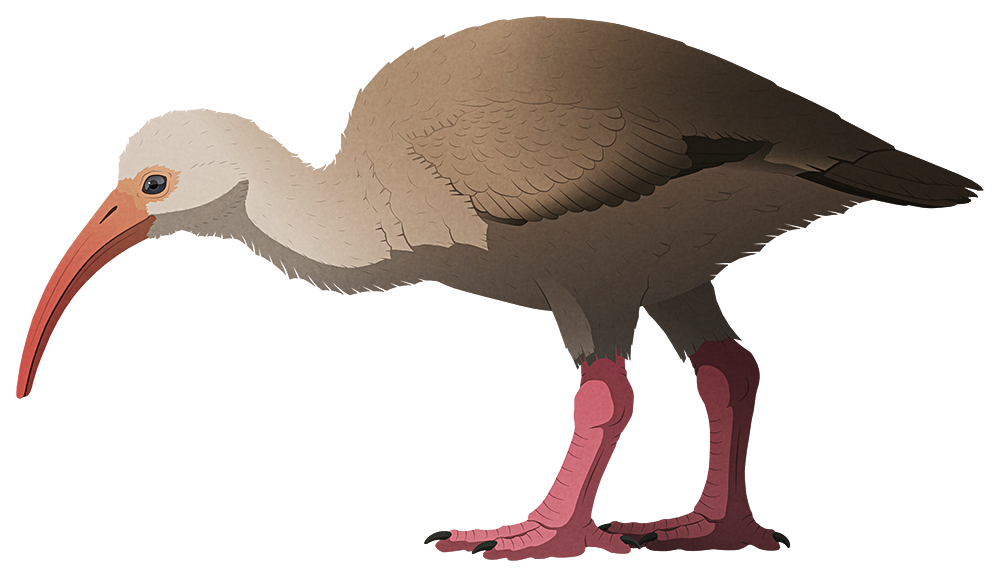
Meanwhile the forest floor insectivore niche was occupied by Talpanas on Kauaʻi, but on the other main islands a different type of bird took up the same role.
Apteribis was an ibis closely related to the modern white ibis and scarlet ibis, with three different species found on the islands of Maui, Molokaʻi, and Lānaʻi.
The Moloka’i flightless ibis (Apteribis glenos) was a typical example of the genus, about 50cm long (1’8″). It was flightless, with reduced wings, and had unusually short stocky legs that gave it proportions much more like a kiwi than an ibis. And it probably lived very much like a kiwi, too, probing around in the forest litter with its beak searching for snails and other invertebrates.
We even have an idea of the coloration of these birds, thanks to subfossil remains with preserved feathers. They seem to have been brown and beige, similar to the juvenile plumage of their close relatives.
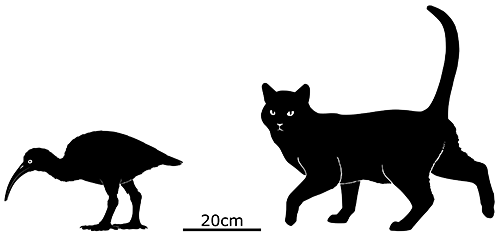
The arrival of humans at least 1000 years ago would have unfortunately been devastating to both the stilt-owls and the flightless ibises. The combination of hunting, habitat destruction, and invasive dogs, pigs, and rats attacking them and their ground-based nests probably drove them all into extinction very quickly.



